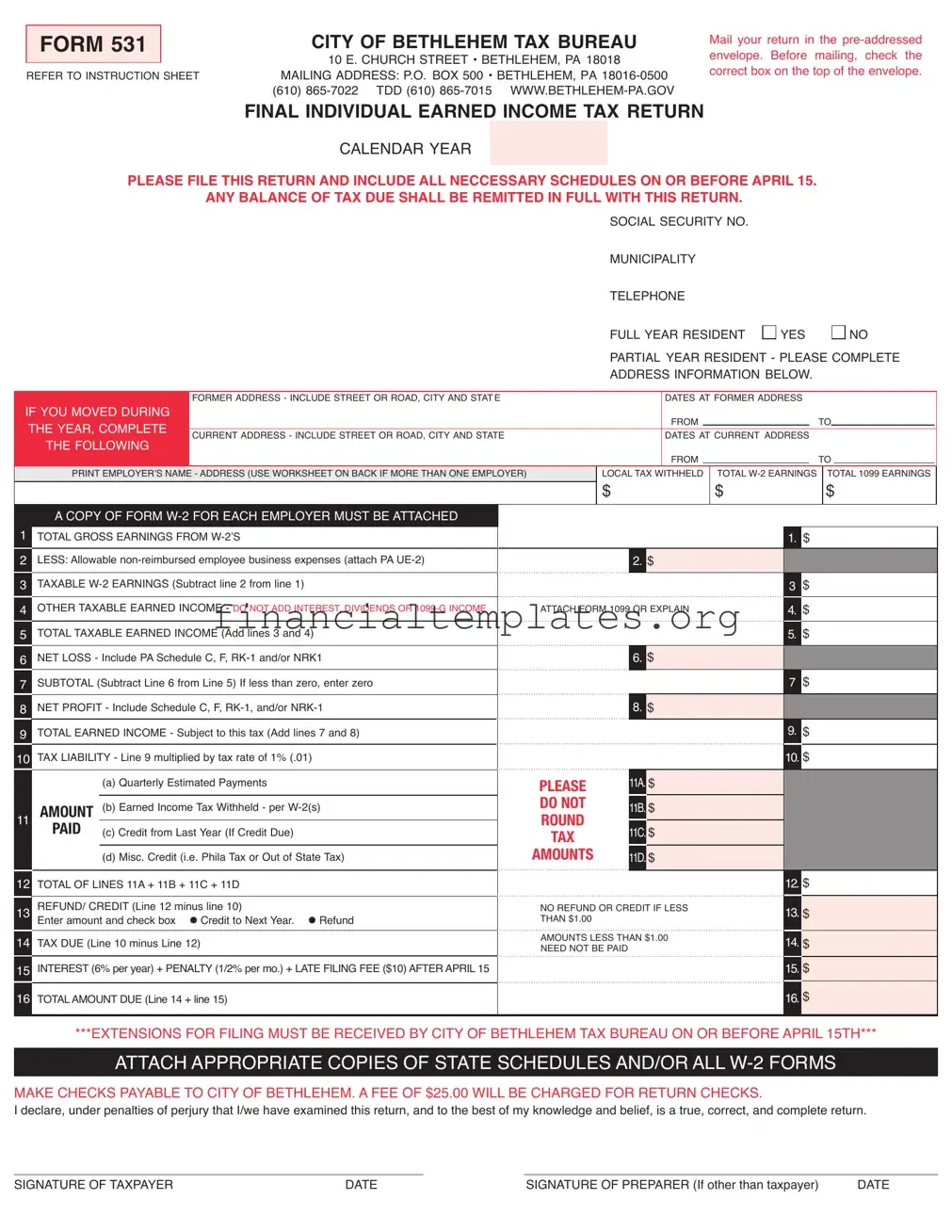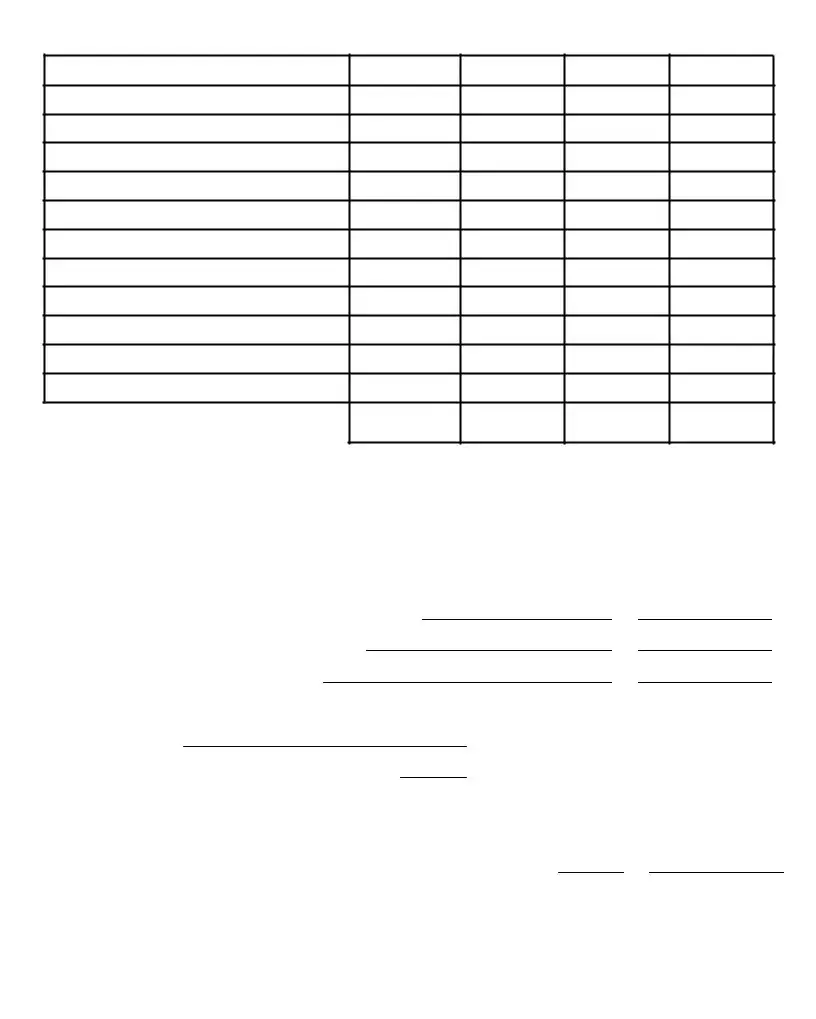The Form 1040, officially the U.S. Individual Income Tax Return, shares core similarities with the Tax 531 form in that it is a comprehensive document utilized by individuals to report their annual income to a government agency, in this case, the Internal Revenue Service (IRS). Both forms require detailed income information, deductions, and applicable credits to accurately calculate tax liability. Like the Tax 531, Form 1040 includes sections for wages (similar to W-2 and 1099 income on the Tax 531), as well as deductions and tax credits, which influence the final tax amount owed or refund due.
Form W-2, also known as the Wage and Tax Statement, resembles the Tax 531 in its function of reporting an individual's annual wages and the taxes withheld by the employer. Taxpayers must attach a copy of their Form W-2 to both forms when filing. This ensures that the income reported matches the taxes withheld, aiding in the accurate computation of the taxpayer's final tax obligation or refund eligibility.
Form 1099, which encompasses a series of documents such as the 1099-MISC, 1099-INT, and 1099-DIV, is akin to the Tax 531 in that it also reports various types of income outside of wages, such as freelance earnings, interest, and dividends. Taxpayers using the Tax 531 form are required to disclose their total 1099 earnings, mirroring the process of how such earnings are reported to the federal government through different types of Form 1099.
The Schedule C (Profit or Loss from Business) plays a similar role to portions of the Tax 531 that deal with declaring net profit or loss from business activities. Individuals who own a business or work as independent contractors use Schedule C to detail their business income and expenses. This parallels the sections on the Tax 531 where taxpayers list their gross earnings and subtract allowable business expenses.
The Pennsylvania UE-2 form, used for reporting unreimbursed employee business expenses, bears resemblance to the Tax 531 in its purpose of adjusting taxable income. Like the allowance for non-reimbursed business expenses on the Tax 531, the UE-2 form allows taxpayers to claim legitimate business expenses not repaid by their employer, ultimately reducing their taxable income.
Schedule E (Supplemental Income and Loss) is another document similar to the Tax 531, particularly for renters, royalty earners, or individuals with income from trusts, estates, or S-corporations. It involves declaring additional types of income, akin to how the Tax 531 includes sections for reporting other taxable income beyond wages, emphasizing the comprehensive nature of income reporting for tax purposes.
The Earned Income Tax Credit (EITC) form is directly related to the Tax 531 in terms of tax relief opportunities for low- to moderate-income individuals and families. Though not a form per se, eligibility for the EITC affects the total tax liability or refund on tax returns, including the Tax 531. It reflects a crucial aspect of tax filing where qualifying for tax credits can significantly impact the outcome of one's tax situation.
Finally, the Schedule F (Profit or Loss from Farming) shares similarities with the Tax 531 for individuals engaged in agricultural business operations. It requires detailed accounting of farming income and expenses, comparable to the Tax 531's handling of special categories of work or business income, ensuring that all sources of revenue and deductible costs are thoroughly documented for tax assessment purposes.


